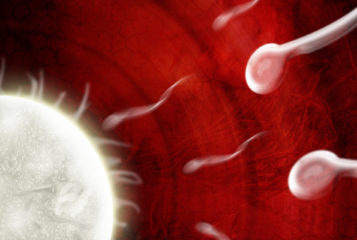Children born through IVF are at an increased risk of some childhood cancers, suggests a new study.
The incidence of childhood cancers was almost three times higher in in children born to mothers who had used IVF compared with those who were conceived spontaneously. The difference was 1.5 per 1000 compared with 0.59 per 1000 children, according to the paper which was published in the American Journal of Obstetrics and Gynecology.
'The association between IVF and total paediatric neoplasms and malignancies is significant,' co-author Professor Eyal Sheiner at Ben-Gurion University of the Negev, Israel, told the Daily Mail. 'With increasing numbers of offspring conceived after fertility treatments, it is important to follow up on their health.'
Israeli researchers monitored about 242,000 children born between 1991 and 2013 until they were 18. Of this group: 98.3 percent had been conceived spontaneously, 1.1 percent were conceived following IVF, and 0.7 percent were conceived after ovulation induction treatments. During the study's median follow-up of 10 and a half years, a total of 1498 or 0.6 percent of the children were diagnosed with a form of paediatric cancer, such as leukemia, brain and spinal cord tumours, and lymphoma.
The paediatric cancer rate was also higher in children born following ovulation induction treatments compared with those born after natural conception, at 1.0 per 1000 compared with 0.59 per 1000 children.
The associations of childhood cancer with IVF and ovulation induction treatments were still seen after the researchers accounted for possible confounding factors including premature births or the mother's age.
However, Professor Sheiner noted that there were some limitations to the study, including that it did not examine the reasons for infertility that led to parents using IVF, nor look at the effect of environmental exposures.
This paper follows a number of studies aiming to determine whether fertility treatments affect the health outcomes of children conceived through them compared with those conceived naturally. This includes a twin study by researchers at King's College London and published recently in Genome Medicine that found no major effects of IVF on a child's epigenetics.
Sources and References
-
Fertility treatments pose risk of pediatric cancers (press release)
-
Fertility treatments and pediatric neoplasms of the offspring: results of a population-based cohort with a median follow-up of 10 years (paper)
-
Babies born via IVF are 3 times more likely to get cancer
-
DNA methylation changes at infertility genes in newborn twins conceived by in vitro fertilisation
-
King's College finds IVF doesn't impact future health






Leave a Reply
You must be logged in to post a comment.